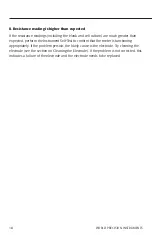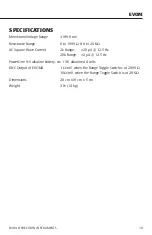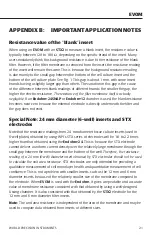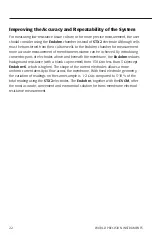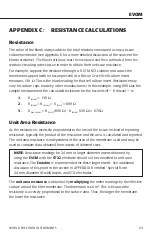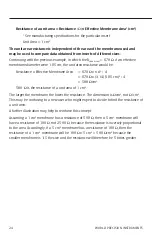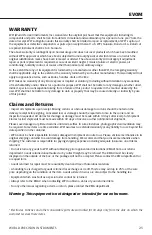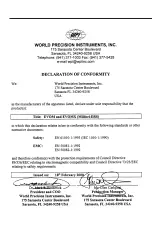
Resistance of a unit area = Resistance
(Ω
)
x Effective Membrane Area*
(
cm
2
)
* See manufacturing specifications for the particular insert
Unit Area = 1 cm
2
The unit area resistance is independent of the area of the membrane used and
may be used to compare data obtained from inserts of different sizes.
Continuing with the previous example, in which the R
(true tissue)
= 670
Ω
, if an effective
membrane diameter were 1.05 cm, the unit area resistance would be:
Resistance x Effective Membrane Area
= 670
Ω
x
π
d
2
/ 4
= 670
Ω
x (3.14) (1.05 cm)
2
/ 4
= 580
Ω
cm
2
580
Ω
is the resistance of a unit area of 1 cm
2
.
The larger the membrane, the lower the resistance. The dimension is
Ω
cm
2
, not
Ω
/cm
2
.
This may be confusing to a new user who might expect to divide to find the resistance of
a unit area.
A further illustration may help to reinforce this concept:
Assuming a 1 cm
2
membrane has a resistance of 500
Ω
, then a 5 cm
2
membrane will
have a resistance of 100
Ω
, not 2500
Ω
, because the resistance is
inversely
proportional
to the area. Accordingly, if a 5 cm
2
membrane has a resistance of 100
Ω
, then the
resistance of a 1 cm
2
membrane will be 100
Ω
x 5 cm
2
= 500
Ω
cm
2
because the
smaller membrane is 1/5 the size and the resistance will therefore be 5 times greater.
24 WORLD PRECISION INSTRUMENTS









